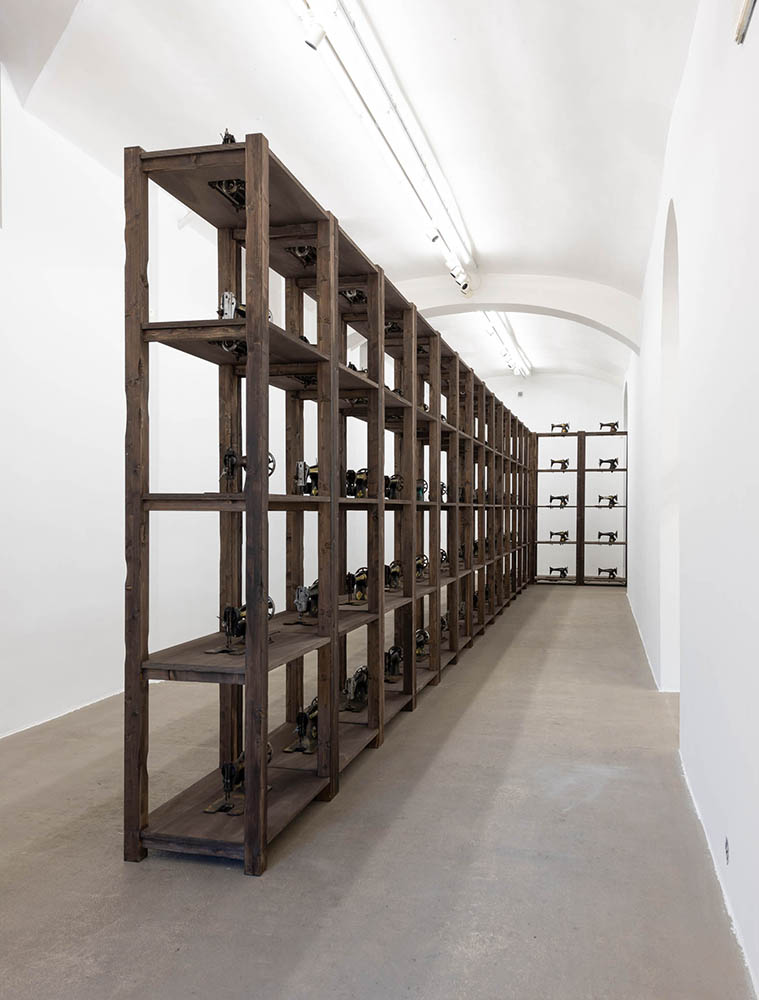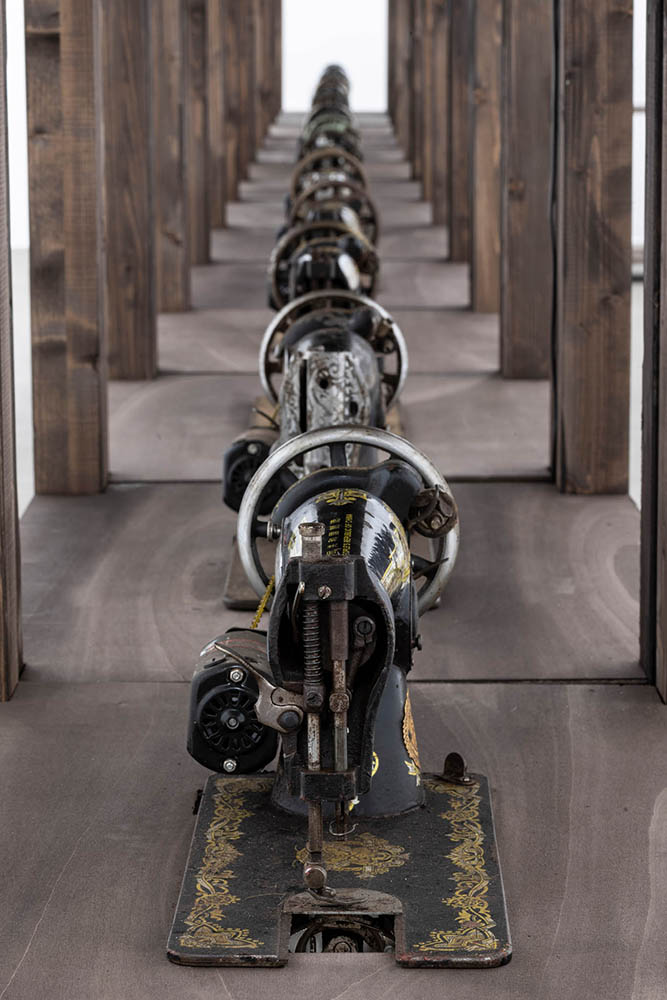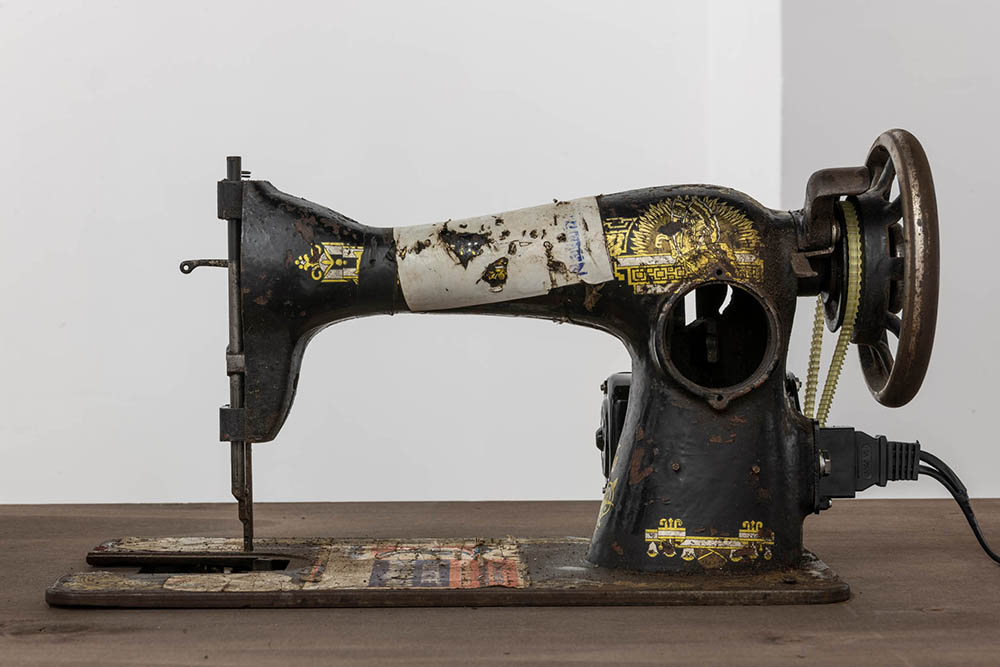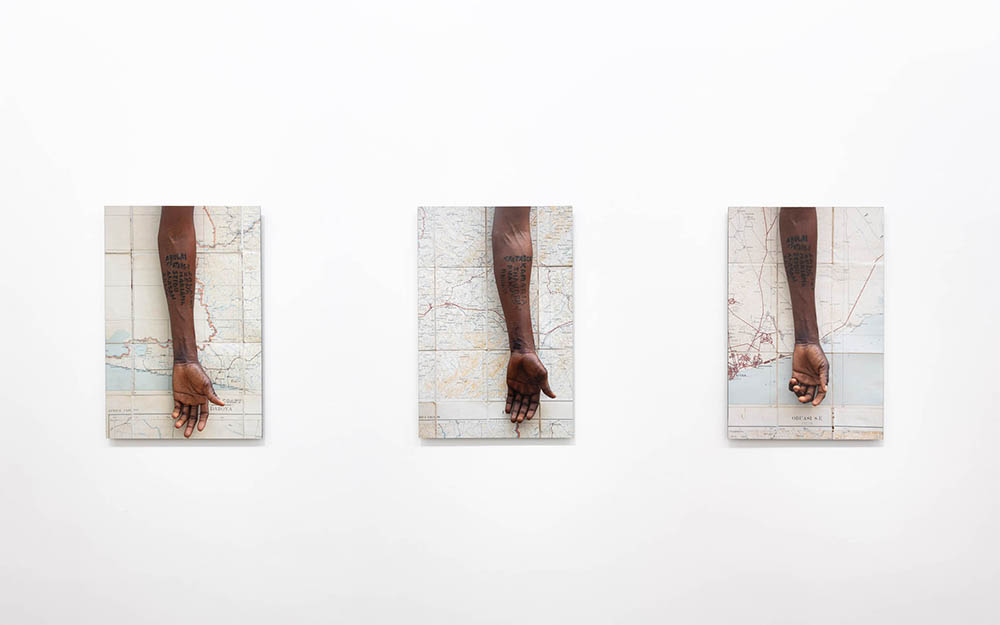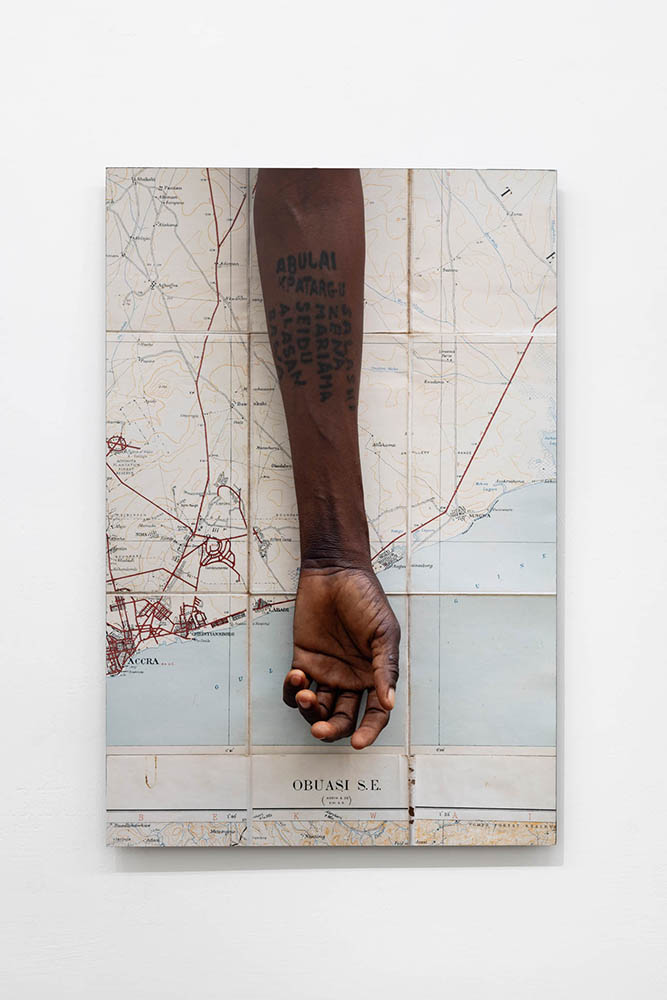Embedded within the specific cultural and socio-political history of Ghana, the work of Ibrahim Mahama addresses issues of globalisation, labour, the exchange of materials and community building, ultimately bringing to the fore a more universal social condition. Mahama is perhaps most well known for his wrapping of architectural structures with jute sacks. Originally made in Southeast Asia and imported to Ghana to transport cocoa beans, these sacks eventually become multi-functional objects reused both by local goods sellers, and for various needs in the home. Both material and commodity trajectory – with its textured skin that retains the imprint of its own history – exemplify the crux of Mahama’s practice: the investigation of the memories and decay of history, cultural fragments, the discarding and future transformation of objects gathered from the urban environment. Through his examination of the history of these objects, Mahama underlies how their evolution over time denotes the developments and changes in contemporary society. Living Grains is on view through December 21 at Fondazione Giuliani Via Gustavo Bianchi, 1, 00153 Roma. photographs courtesy of Fondazione Giuliani


